This post may contain affiliate links. Please read our disclosure policy.
This homemade butterscotch pudding is rich, creamy, and packed with deep caramel flavor. Made with butter, brown sugar, and real cream, it’s a warm and satisfying dessert that’s perfectly sized for one.

Why You’ll Love This Recipe
- Rich Butterscotch Flavor: Made with real butter, brown sugar, and a touch of vanilla for deep, classic flavor.
- Perfectly Portioned: Designed for one. No waste, no leftovers, just the right amount.
- Made from Scratch: No instant mix here. Real ingredients deliver a smooth, rich texture.
- Warm and Comforting: A simple, homemade dessert that’s full of nostalgic flavor.
If you’ve never made butterscotch pudding from scratch, you’re in for a treat. This rich and creamy dessert is made with simple ingredients like brown sugar, butter, cream, and milk, simmered together to create that deep, caramel-like flavor we all love in butterscotch. It’s incredibly easy to make and so much better than anything from a box.
What I love most about this pudding is that it’s made just for one. You get all the richness and flavor of a classic homemade pudding in a perfectly sized portion. Whether you’re in the mood for something sweet after dinner or just want to treat yourself, this butterscotch pudding delivers every time.
Looking for more single serving pudding recipes? Try our creamy individual vanilla pudding, rich single serving chocolate pudding, sweet and gooey caramelized banana pudding for one, and comforting rice pudding for 1. You might also like our individual flan dessert recipe with deep caramel flavor. Each is a perfect treat to enjoy on your own!

Ingredients
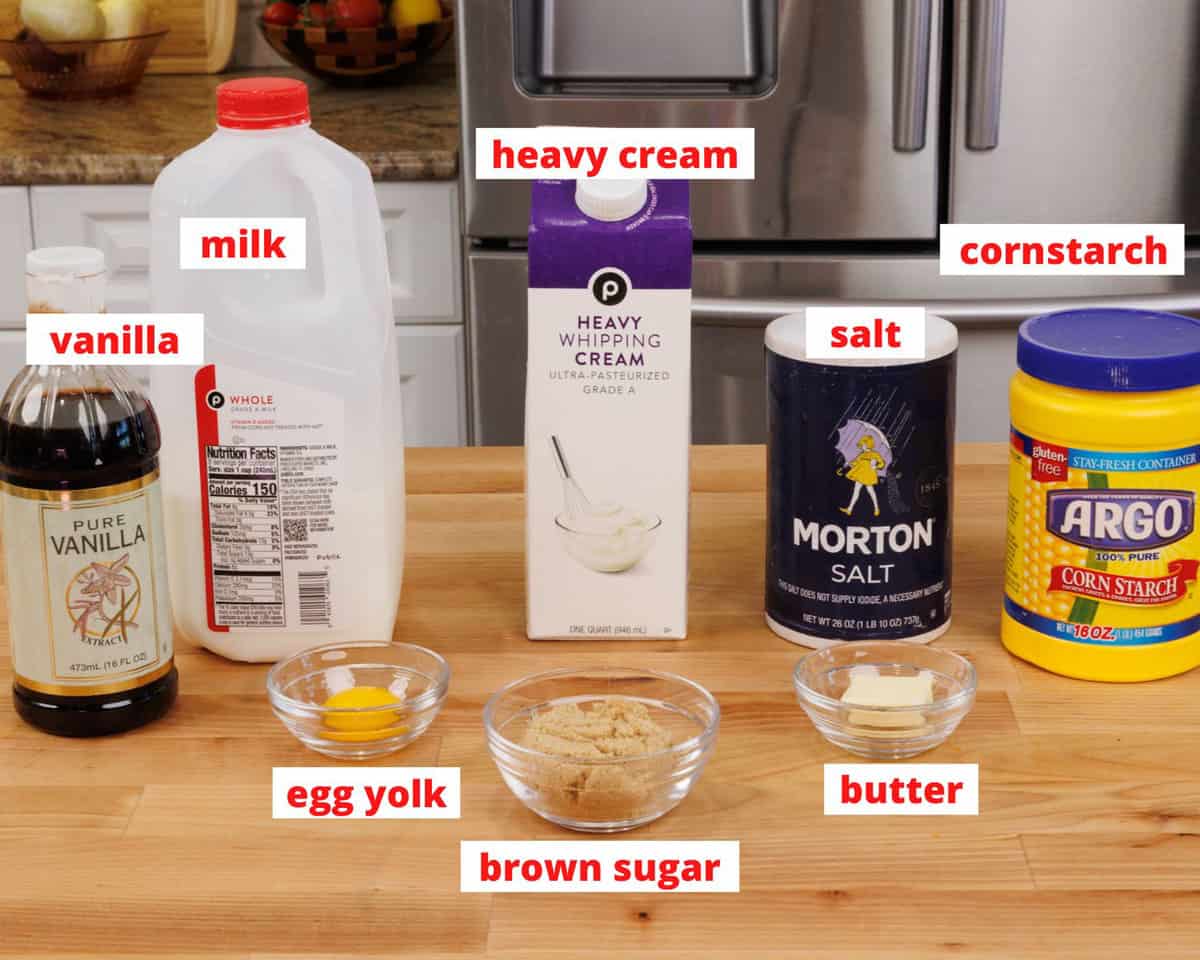
If you have any ingredients leftover from this small batch butterscotch pudding recipe, check out our Leftover Ingredients Recipe Finder.
- Cornstarch: Thickens the pudding and creates a smooth, creamy texture.
- Brown Sugar: Provides the signature butterscotch flavor. Use dark brown sugar for a deeper flavor. Make your own using our small batch brown sugar recipe if needed.
- Whole Milk: Adds creaminess to the pudding.
- Heavy Cream: Use heavy cream or heavy whipping cream (both work). You can also use 1 cup of half-and-half instead of milk and cream combined. Leftover cream? Use it in a mini German chocolate cake, single serving no-bake cheesecake, or panna cotta for one.
- Egg Yolk: Helps thicken the pudding along with cornstarch. Save the egg white for recipes like mini flourless chocolate cake or a mini pavlova.
See recipe card below for a full list of ingredients and measurements.
Recipe Variations
Want to change things up? Try one of these easy ways to add a new flavor or texture to your butterscotch pudding:
- Toffee Crunch: Stir in crushed toffee pieces for added crunch and deeper butterscotch flavor.
- Banana: Add sliced ripe banana for a fruity layer that pairs well with the rich pudding.
- Warm Spices: Mix in a pinch of cinnamon or nutmeg for a lightly spiced flavor.
- Bourbon: Add a tablespoon of bourbon for a smooth, grown-up twist.
How To Make Butterscotch Pudding
These photos and instructions help you visualize how to make a single serving of butterscotch pudding. See the recipe card below for ingredient amounts and full recipe instructions.
- Make the Slurry: In a medium bowl, whisk together cornstarch and salt. Slowly add the milk, whisking until smooth with no lumps.
Pro Tip: Always mix cornstarch with cold milk first. Never add it directly to a hot mixture, or it will clump.
- Add Egg Yolk: Whisk the egg yolk into the cornstarch mixture and set aside.
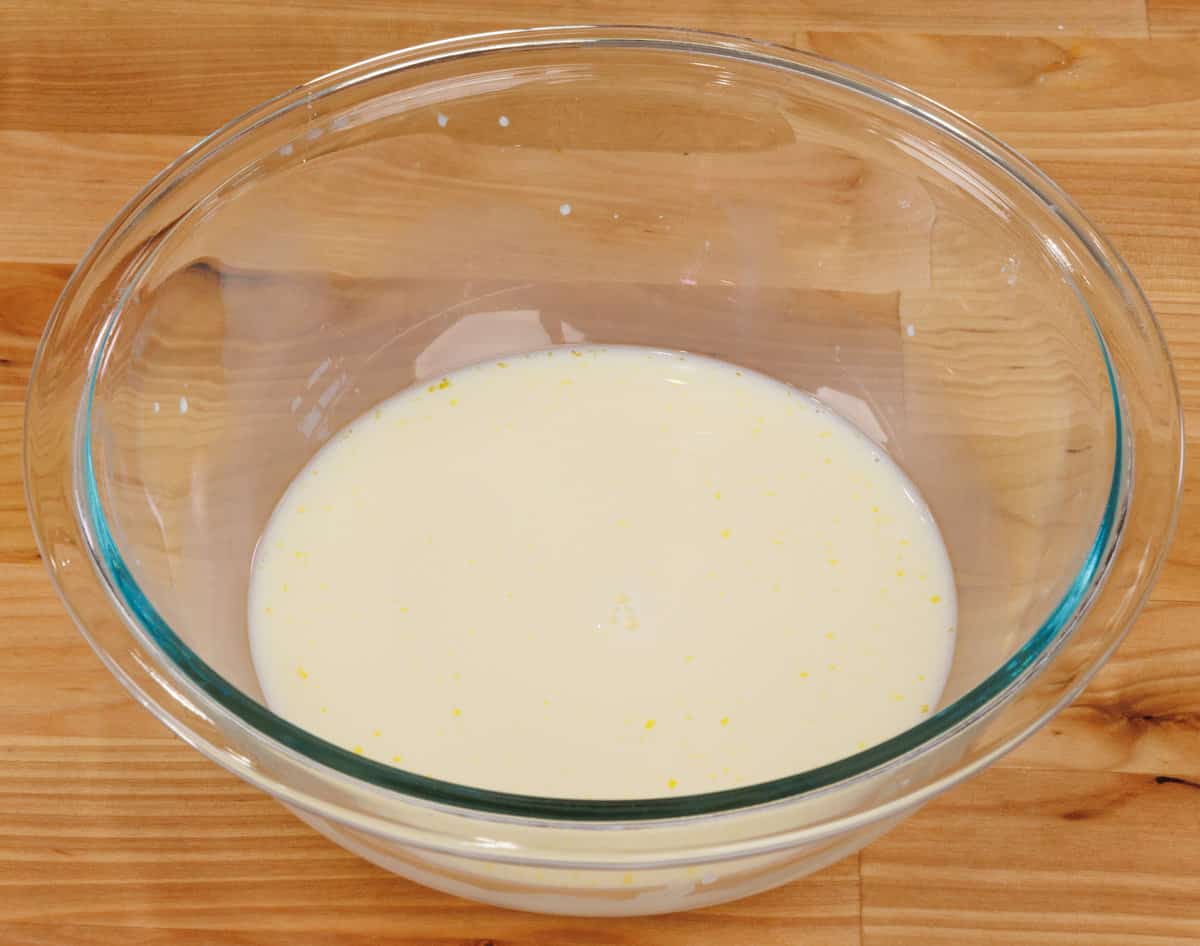
- Start the Butterscotch: In a 2-quart saucepan over medium-high heat, melt the butter. Stir in the brown sugar.
- Melt the Sugar: Continue stirring until the sugar fully melts and becomes smooth. It may look grainy at first, just keep stirring.
- Add Cream: Remove the pan from heat and carefully stir in the cream. It will steam and may bubble; this is normal.
- Smooth the Mixture: Return the pan to low heat and stir until the mixture is smooth and the sugar is fully dissolved.

- Temper the Egg Mixture: Off the heat, slowly whisk a little of the hot butterscotch into the egg and cornstarch mixture to warm it up.
Gradually add more, a little at a time, whisking constantly.
Note: This step, called tempering, prevents the egg from scrambling.
- Cook Until Thickened: Pour the tempered mixture back into the saucepan. Cook over medium-high heat, stirring constantly until it boils.
- Boil and Stir: Once boiling, continue stirring and cook for 2 minutes to fully thicken.
- Finish and Chill: Remove from heat and stir in the vanilla extract. Pour the pudding into a bowl or jar.
Pro Tip: To prevent a skin from forming, press plastic wrap directly onto the surface.
Chill for at least 1 hour before serving and consider topping with homemade whipped cream.

Want to Make a Small Butterscotch Pie?
Use our mini graham cracker crust and press it into a 10-ounce ramekin or similar dish. Spoon the butterscotch pudding over the crust – no baking needed.
Expert Tips
- Read Before You Start: Review the full recipe, including the Ingredient Notes and process photos. Everything you need is in the post to help your pudding turn out just right.
- Use Caution with Sugar: Sugar gets very hot when melted. Use a deep saucepan and stir carefully to avoid burns or bubbling over.
- Don’t Skip the Slurry: Mixing the cornstarch, milk, and egg yolk first ensures a smooth, lump-free pudding. Whisk until completely smooth before adding to the pot.
Frequently Asked Questions
Caramel pudding is made with white sugar that’s cooked until it turns golden and develops a deep, slightly bitter flavor. Butterscotch pudding is made with brown sugar and butter, giving it a sweeter, richer, and slightly buttery taste.
Butterscotch has a rich, buttery flavor with a deep sweetness from brown sugar. It’s similar to caramel but with a warmer, slightly saltier taste.
Yes. Double the ingredient amounts and use a 3-quart saucepan.
Let the pudding cool to room temperature (within 2 hours), then press plastic wrap directly onto the surface to prevent a skin from forming. Refrigerate for up to 3 days.
RELATED: 15 Easy Single Serving Dessert Recipes
Ways To Use Leftover Ingredients
If you have any ingredients leftover from this recipe, check out our Leftover Ingredients Recipe Finder or you might like to consider using them in any of these single serving and small batch recipes:
If you’ve tried this small butterscotch pudding recipe or any recipe on One Dish Kitchen please let me know how you liked it by rating the recipe and telling me about it in the comment section below.
If you take a picture please tag us on Instagram (@onedishkitchen) we’d love to see it!
Butterscotch Pudding For One

Equipment
Ingredients
- ½ tablespoon cornstarch
- ⅛ teaspoon salt
- ¾ cup whole milk
- 1 large egg yolk
- 1 tablespoon salted butter
- ¼ cup brown sugar
- ¼ cup heavy cream
- ⅛ teaspoon vanilla extract
- whipped cream -optional for topping
Instructions
- In a medium bowl, whisk together cornstarch and salt. Slowly add the milk, whisking until smooth with no lumps.Pro Tip: Always mix cornstarch with cold milk first. Never add it directly to a hot mixture, or it will clump.
- Whisk the egg yolk into the cornstarch mixture and set aside.
- In a 2-quart saucepan over medium-high heat, melt the butter. Stir in the brown sugar.
- Continue stirring until the sugar fully melts and becomes smooth. It may look grainy at first, just keep stirring.
- Remove the pan from heat and carefully stir in the cream. It will steam and may clump and bubble; this is normal.
- Return the pan to low heat and stir until the mixture is smooth and the sugar is fully dissolved.
- Off the heat, slowly whisk a little of the hot butterscotch into the egg and cornstarch mixture to warm it up.Gradually add more, a little at a time, whisking constantly.Note: This step, called tempering, prevents the egg from scrambling.
- Pour the tempered mixture back into the saucepan. Cook over medium-high heat, stirring constantly until it boils.
- Once boiling, continue stirring and cook for 2 minutes to fully thicken.
- Remove from heat and stir in the vanilla extract. Pour the pudding into a bowl or jar.Pro Tip: To prevent a skin from forming, press plastic wrap directly onto the surface.Chill for at least 1 hour before serving.
Notes
- Read Before You Start: Review the full recipe, including the Ingredient Notes and process photos. Everything you need is in the post to help your pudding turn out just right.
- Use Caution with Sugar: Sugar gets very hot when melted. Use a deep saucepan and stir carefully to avoid burns or bubbling over.
- Don’t Skip the Slurry: Mixing the cornstarch, milk, and egg yolk first ensures a smooth, lump-free pudding. Whisk until completely smooth before adding to the pot.
Nutrition
The information shown is an estimate provided by an online nutrition calculator. It should not be considered a substitute for a professional nutritionist’s advice.

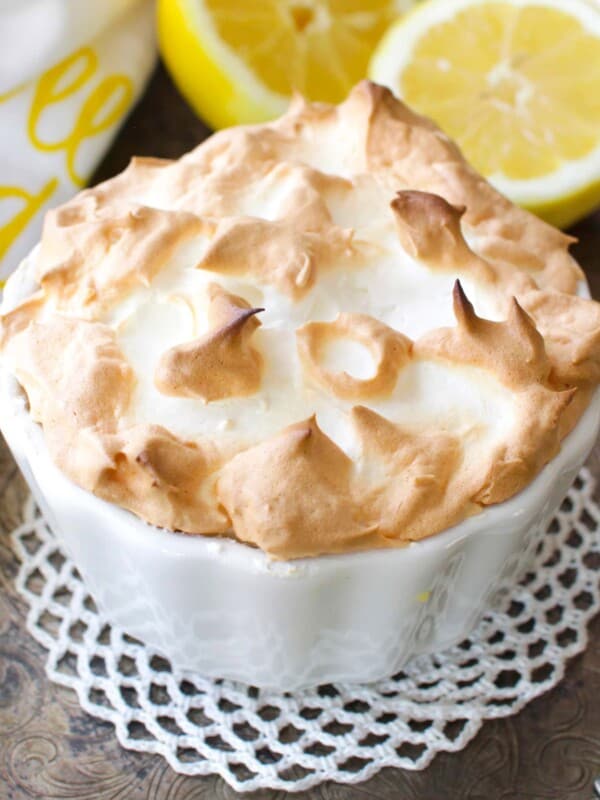
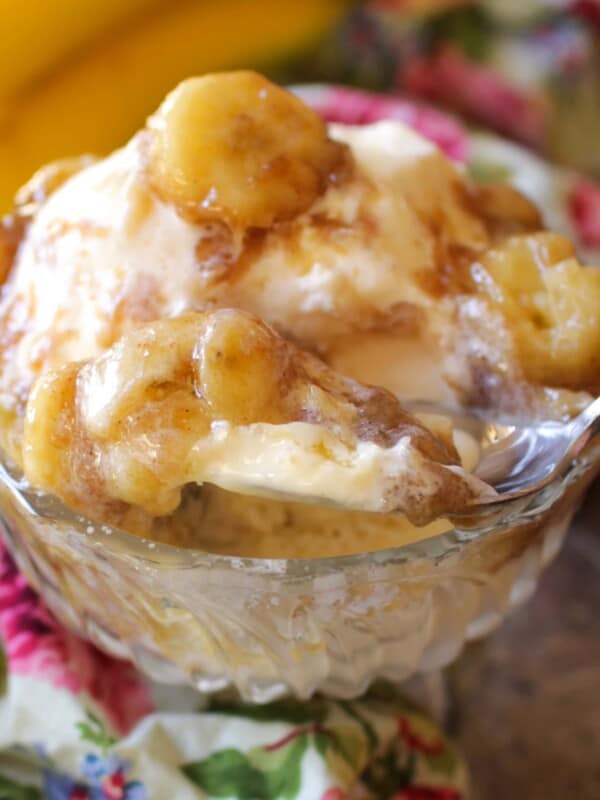
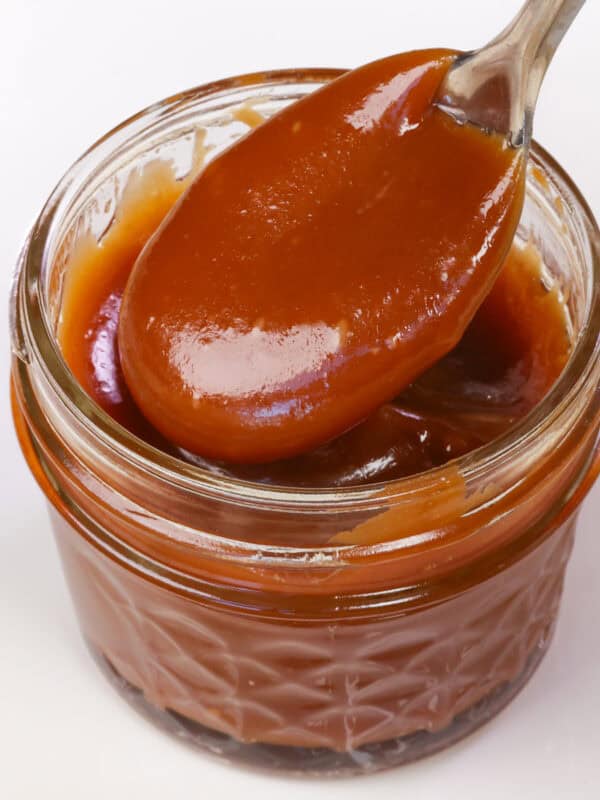












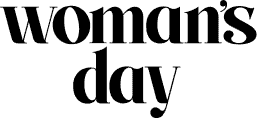






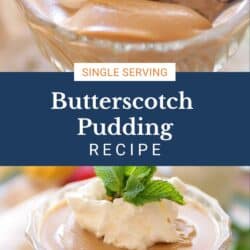
Could this be used as filling for butterscotch pie?
Yes, you can use this as a filling for butterscotch pie. Our shortbread crust or graham cracker crust would work well, or you can use another pie crust of your choice. Just be sure not to bake the pie—this pudding works as an unbaked pie filling.
Great recipe.
The taste was good but it turned out really grainy. What did I do wrong?
The graininess in your butterscotch pudding likely stems from the brown sugar not fully dissolving. It’s crucial to allow the brown sugar to melt completely and integrate smoothly with the other ingredients, as illustrated in Step 4 of the recipe photos. Next time, ensure the sugar has melted entirely before moving on to the next step for a creamier texture. Thanks for trying the recipe, and I hope your next batch turns out perfectly silky!
I doubled the recipe and it turned out great! I found myself wishing for more sweetness, can I add in some white sugar with the brown?
Hi Marie, I haven’t tested this pudding recipe with more sugar but I suggest you try it.
I made this for my husband, but it turned rubbery and was almost completely solid after I stuck it in the fridge. Did I overcook it?
Hi Heather,
That’s frustrating, I’m sorry your pudding didn’t turn out as planned. It is possible that it was overcooked. If you try this recipe again, keep a close eye on the time. Also, make sure that the cornstarch “slurry” is well mixed and that no lumps remain. This should also help. Please keep me posted.
Joanie
I usually just make a classic chocolate pudding but this looks so wonderful and would be a wonderful change!